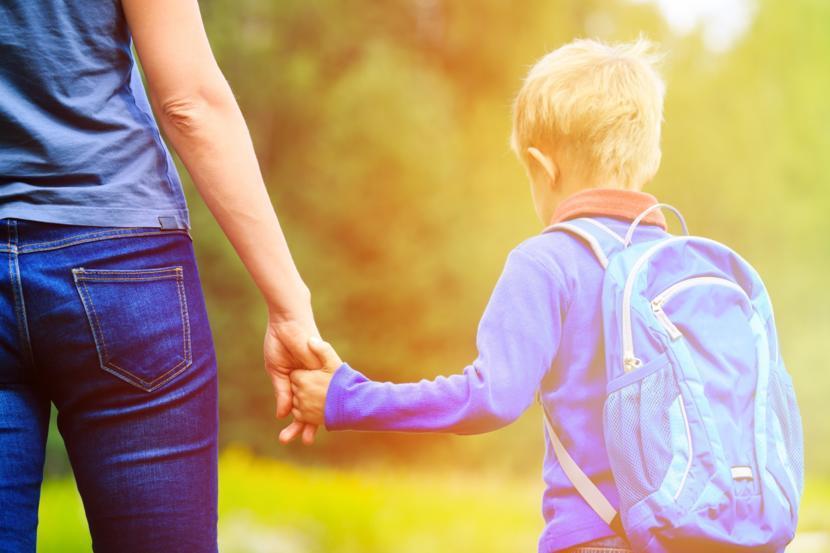Autism Parenting: Planning Safety Measures Post-Diagnosis

It can be really scary for a parent to hear about anything that might be wrong with their child. Autism is no exception. It’s one of the most common disorders affecting people from all over the world. No matter how common this disorder is, it still doesn’t make it any easier for a parent to receive this news.
It’s one thing to hear about autism from the news, or even from friends. However, when it happens within personal relationships, it can be very intimidating because it’s hard to tell what to do next.
So, what do you do next?
What are some things to prepare for your child? Where can you go for help in case you need it? There are infinite uncertainties when faced with something so new and close to home. The first thing to do is to make sure your child is safe.
Why are safety measures so important?
Most kids today are diagnosed with autism at a very young age, usually in their preschool and toddler years. This is the time of the “terrible twos”. These kids are not only new to walking and running and jumping and exploring, but they are also the most curious little people. This turns into a potential disaster at every corner, with hot plates to pull down with clumsy fingers and grandma’s medicine to snack on.
Most parents are wary of all the dangers that can entrap their beloved two-year old, and might have already childproofed their homes with things like outlet covers and childproof locks. However, children with autism need a little more help to keep them out of danger.
Why might safety measures be different for autistic kids?
Kids with autism behave a little differently than other kids. A lot of kids on the spectrum don’t really have any fears because they have trouble with the concept of danger itself.
Children with autism also behave a little differently. They typically like to wander more than others. Combined with a total lack of fear or concept of danger, it can be a disastrous result. A kid wandering off on his or her own might not realize a freeway full of speeding cars might hurt them. They can sometimes wander for miles without realizing that they might never get home.
It’s harder to communicate with a child on the spectrum
What makes safety even more difficult is that children with autism have trouble understanding when parents are upset. They might not understand what you mean when you say “no”. This makes safety training more difficult, which is not only frustrating for parents, but also dangerous for the kids. It’s harder for kids on the spectrum to learn what’s unsafe for them.
What can you do if your child wanders away despite all your efforts?
Despite your best efforts, there is always a risk your child might get away and wander off. We want to be as prepared as possible so that in the worst-case scenario, your child has the highest chance for their safe return. There are now ID cards made specifically to help children with autism in case they get lost. These cards have the child’s name, address, and photo as well as the parent’s contact phone number. It’s also good to have a safety plan in case your child wanders off.
Plan for safety measures in case your child is lost
Even if you are the most attentive and loving parent, your child can get lost. That happened to Gary Weitzen. He is the Executive Director of the POAC Autism Services and started the Autism Shield Program to train emergency workers on how to keep people with autism safe. Gary has a son with autism, and many years ago, his son was lost.
Teach your child how to swim
Gary says that the most important thing to prepare your child is to teach him or her how to swim. Children with autism are naturally drawn to bodies of water. In the past, there were many stories of these kids wandering away from home and eventually drowning.
Show your child how to tell someone who to call
Gary also relays tips for how to prepare your child in case he or she is lost. Children with autism might have trouble understanding how to tell someone who they are and who to call. Besides carrying an identification card, these kids should be taught how to show the ID and give their parent's phone number when asked.
Have an emergency plan
He pushes families with autistic kids to have an Emergency Plan. There are programs out there to help families with this, such as Project Lifesaver. Every child ever lost that was enrolled in Project Lifesaver was returned home alive. The average amount of time it took to find them was 14 minutes. Other ways to safeguard your child is by using a smartphone. There are tons of free apps that help you locate your family members using GPS. They are usually very inexpensive services and you can track where your child is in real time.
Safety in the home
Besides wandering off, kids with autism face other dangers inside their own home. Young children love to climb. Furniture like a heavy television set or glass mirror might not strike you as dangerous at first glance, but might be deadly if it fell on your child. For children with autism, an innate sense of danger is even less than other kids. This means that they are even less inhibited to climb up on things and cause themselves harm. On top of that, children with autism have trouble with understanding "no", and this might keep you from being able to stop something dangerous as it is happening before your very eyes.
To prevent any of these accidents from happening in the first place, it’s best to make sure everything is secured beforehand. Things like dressers, washer and dryers, bookcases, and other heavy items need to be secured with as many safety straps as possible to prevent them from falling. If you’re really worried about some heavy items, it might even be better to store them away until your young child grows out of this climbing phase.
Teaching safety to your child
The most important task is to teach your child how to stay safe. The best way to approach this in kids with autism is to use lots of visual pictures and guides to help them understand. Many children with autism can be nonverbal, and visual aids can really help bridge communication. There are pictures available online that can guide your child inside their own home. For example, a picture of a flame above the tap can help your kid understand which knob will turn on hot water. Other great methods to use are STOP and GO signs to teach kids where they can go, and where they shouldn’t.
References
https://www.autismparentingmagazine.com/safety-measures-after-diagnosis/















